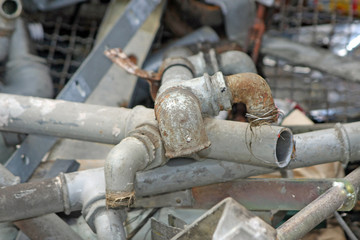Make your home a lead-free haven

Your home should be a haven, not a danger zone. Toxins in the home are unseen dangers that can cause serious health problems.
A big culprit is lead which, if present in your water or circulating as particulate in indoor air, builds in your body and could impact fertility, lead to developmental delays in children, create mood disorders, and cause abdominal pain. It can also lead to death.
Lead can be found in old water pipes, paint, and even electrical cords.
Yes, electrical cords: the ones used for computers, lights and appliances. Lead compounds are used to stabilize pigmentation in PVC coated wiring, and to make it flexible and fireproof. Lead is sweet to taste, and clearly a problem if kids or pets discover this and start chewing on cords. It’s advised that you wash your hands after touching them.
You can purchase fabric or hospital grade cords, which are lead-free, or casings to place over PVC cords.
If you live in a house 70 years and older, you may want to check your water pipes. Lead was used for centuries – up until the 1950s because of its malleability and resistance to small leaks. If you are uncertain about your pipes, it’s a good idea to double check.
You may be able to see the piping in an unfinished basement. If the pipe is dull whitish-grey, it’s lead.
If you can’t see the pipes, staff at City Hall can check the City records, but the process could take up to 30 business days. A licensed plumber can confirm for you, too.
If you have lead pipes, there are two parts to address: the property side and the City side. You can arrange for the City’s contractor to replace the lead service pipe on both sides, or your own contractor to take care of your property prior to the City contractor replacing the connecting pipes. You are financially responsible for lead pipe replacement on your side of the property, but the City will bear the cost on its side. To learn more, visit Toronto’s Priority Lead Water Service Replacement Program.
When replacing your pipes, ensure that the brass fittings (that connect pipe lengths), and solder are lead free. Brass fittings alone – even brand new ones (!) – can contain up to eight percent lead. Water that is free of dissolved salt or minerals and/or that sits in the fittings can be easily contaminated.
One of Greening Homes’ requirements is ensuring that California Standard Lead-Free brass fittings and lead-free solder are used in its projects.
Lead may also be in your walls if your house was built before 1960 when it was used in paint. This poses a danger if the paint is chipping. It is also of concern if you are renovating your home and plan to demolish the walls.
In an upcoming blog we will cover the requirements and guidelines required to check for and remove toxic materials, such as lead and asbestos, prior to renovating an older home.
